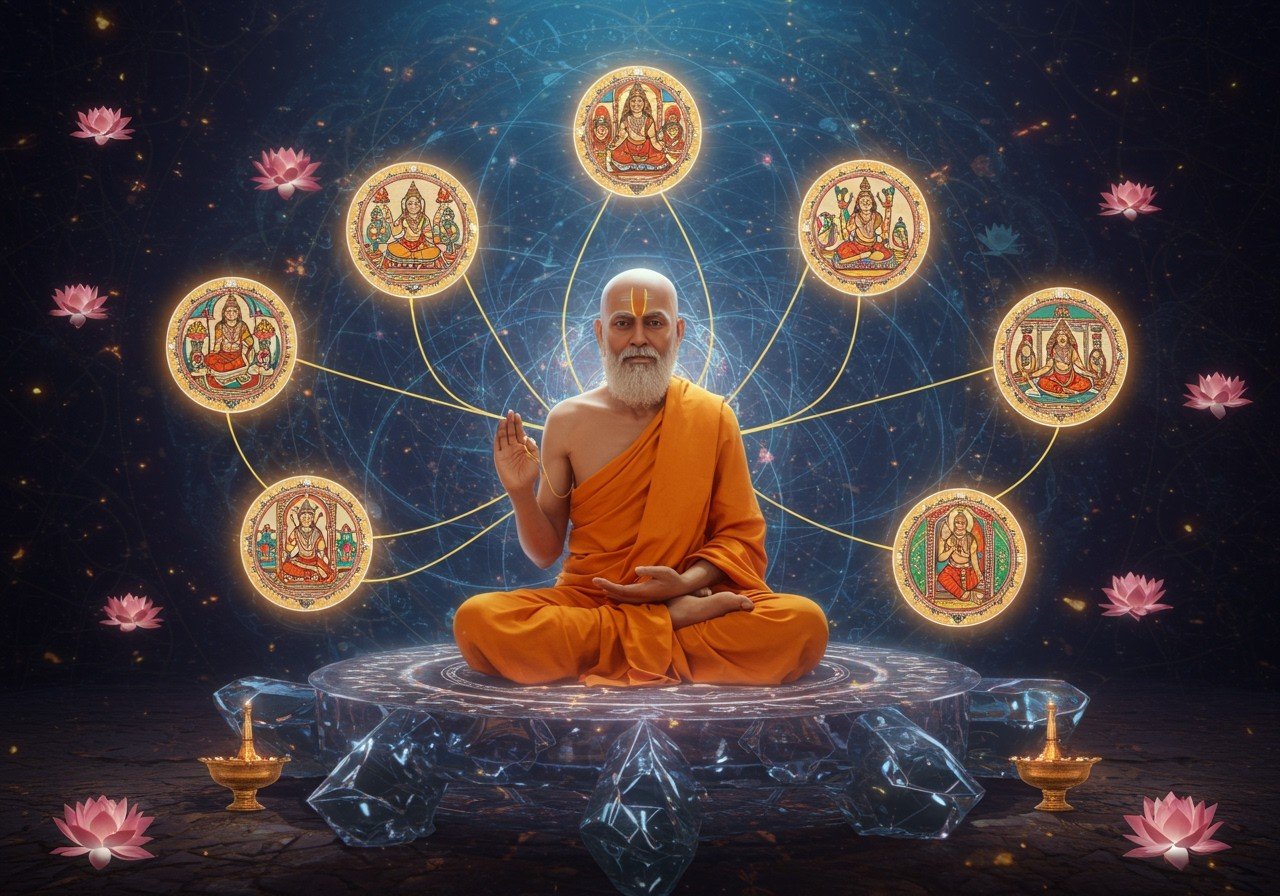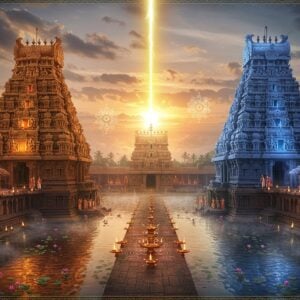
Vaisheshika philosophy, one of the six orthodox (Astika) schools of Hindu philosophy, reveres the Vedas as timeless and infallible texts. It provides unique perspectives on reality and existence, deeply rooted in Indian tradition. Attributed to the sage Kanada, this philosophy continues to shape Hindu thought and holds historical significance.
What is Vaisheshika Philosophy?
Derived from the Sanskrit word ‘Vishesha,’ meaning distinction or particularity, Vaisheshika centers on metaphysics and epistemology. This philosophy champions a pluralistic realism approach, asserting that reality comprises numerous distinct entities, categorized as ‘Padarthas.’ Its primary objective is to comprehend the universe’s nature and structure through logical reasoning. Vaisheshika identifies seven categories of existence:
- Substance (Dravya): The fundamental building blocks of reality. This includes earth, water, fire, air, ether, time, space, soul, and mind.
- Quality (Guna): The attributes inherent to substances, such as color, taste, smell, and texture. These qualities distinguish each substance. They define the characteristics that make each entity unique.
- Activity (Karma): Represents motion and actions within substances. It describes the dynamic nature of reality. This category encompasses all forms of movement and change.
- Generality (Samanya): The common characteristics shared by substances, enabling categorization. This concept facilitates recognizing similarities and differences.
- Particularity (Vishesha): The unique aspects that differentiate each substance. It underlines the individual nature of every entity. This characteristic allows for distinction within a unified reality.
- Inherence (Samavaya): The inseparable connection between qualities and substances. It signifies an intrinsic relationship. This bond explains how attributes exist within their respective entities.
- Non-existence (Abhava): The absence of something, a crucial concept for understanding reality. This category acknowledges the role of absence in defining presence. It completes the framework by considering what is not.
Furthermore, Vaisheshika’s atomic theory posits ‘Anu,’ or atoms, as the fundamental, indivisible components of reality.
Core Concepts of Vaisheshika
Vaisheshika philosophy holds a significant position in Hindu thought. Originating with sage Kanada, it emphasizes understanding reality through distinct categories called ‘Padarthas.’ These categories help decipher the complexities of existence and the universe.
The Seven Padarthas
The seven Padarthas are central to understanding Vaisheshika’s perspective on reality. They provide a framework for categorizing and analyzing the universe.
- Substance (Dravya): These are the fundamental elements, including earth, water, fire, and air, which combine to form the tangible world. Eternal substances, like ether, time, space, soul, and mind, also fall under this category. They are considered the unchanging foundations of existence.
- Quality (Guna): Qualities are the attributes that define substances, giving them their unique characteristics. Color, taste, smell, and texture are all examples of qualities. They enrich our perception of the world.
- Activity (Karma): This refers to motion or action inherent in substances, explaining the dynamic nature of change and transformation. It is the driving force behind the observed changes in the universe.
- Generality (Samanya): Generality represents the common characteristics shared by different substances, enabling classification and understanding of similarities. This principle allows for categorization and conceptual understanding.
- Particularity (Vishesha): This highlights the unique aspects that differentiate substances, emphasizing individuality within the universe. It acknowledges the unique identity of every entity.
- Inherence (Samavaya): Inherence describes the inseparable connection between qualities and substances, illustrating how attributes are intrinsically linked to their respective entities. This concept explains the inseparable nature of qualities and substances.
- Non-existence (Abhava): This category deals with the absence of something, highlighting the importance of understanding what is not present to fully grasp reality. It completes the framework by acknowledging the role of absence.
Atomism
Central to Vaisheshika is the concept of atomism. It proposes that all objects are reducible to eternal, indivisible atoms (‘Anu’), the fundamental building blocks of matter. This aligns with the belief in a distinct reality composed of numerous individual entities. This theory resonates with modern scientific understanding of matter.
Epistemology and Valid Knowledge
Vaisheshika identifies two primary sources of knowledge: Perception (Pratyaksha) – direct observation through the senses; and Inference (Anumana) – logical deduction based on evidence. These methods prioritize empirical study and rational thinking, demonstrating a scientific approach in ancient India.
Vaisheshika’s Influence and Legacy
Vaisheshika maintains a close relationship with Nyaya philosophy, often referred to collectively as Nyaya-Vaisheshika, showcasing their complementary approaches to logic and metaphysics. Its principles continue to inspire contemporary science, especially in physics and metaphysics, illustrating its enduring relevance.
Vaisheshika in Practice
Vaisheshika’s principles are reflected in various traditional Indian practices. It influences ethical conduct by encouraging the pursuit of truth and knowledge. The philosophy’s detailed observation also inspires mindfulness and attentiveness in everyday life, fostering a deeper connection with one’s surroundings.
Exploring Hindu Philosophy Further
If you’re interested in delving deeper into Hindu philosophy, you might find these articles helpful:
Understanding Vaisheshika provides a unique perspective on reality, balancing empirical observation with logical reasoning. The pursuit of knowledge remains its core, offering guidance to those who value tradition and seek truth in existence.
Embracing the Wisdom of Vaisheshika
Vaisheshika philosophy encourages us to explore the world with curiosity and respect. By understanding its core concepts, we connect with a tradition that values truth and seeks to explain the mysteries of the universe. The seven Padarthas offer a framework for appreciating the unique and shared qualities of everything around us, promoting mindful living.
Poojn.in offers a variety of products that can enhance your spiritual journey and help you connect with the wisdom of traditions like Vaisheshika. Explore our collection of Vaijanti Malas, perfect for meditation and deepening your spiritual practice. You can also find a wide range of spiritual murtis and other items to enhance your personal altar or meditation space.
In today’s world, Vaisheshika’s influence remains strong, guiding scientific thought and ethical living. Embracing its teachings can enrich our lives by helping us appreciate both the tangible and intangible aspects of existence. Honoring this ancient wisdom offers a timeless path to understanding reality, blending tradition with the pursuit of knowledge.


